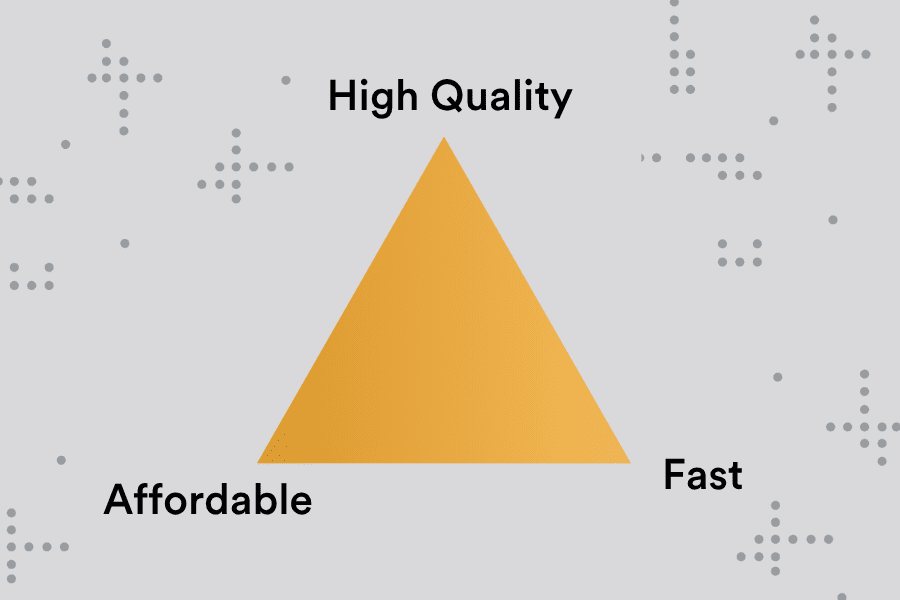Exploring the trade-off-triangle in electronic product development
Companies naturally want their product development projects to be affordable, high-quality, and fast. It sounds like a reasonable expectation, but developers who are great at engineering know that you can only pick two of the three.
- Any project that is fast and low cost is cutting corners 🚀💰
- Any project that is low cost and high quality won’t be fast 💰✨
- Any project that is high quality and fast, won’t be cheap ✨🚀
This dilemma is just a reality of life. It’s called the trade-off triangle. Let’s dive in and explore what it means in the context of developing an electronic product.

Fast and Affordable
If you go fast and affordable, you’ll get something out to market very quickly, but it probably won’t scale well. It’s perfect for early testing, investment, or finding product-market fit. But to have gone fast, there must have been some shortcuts you’ve taken. There might be some technical debt, some bugs, or even just some things you don’t even understand about your product yet. These might not matter for the first few months, but eventually they’ll come back to bite you.
Affordable and high-quality
Now, let’s say you’re on a tight budget, but you can’t compromise quality. In this case, you will need a lot of time. When we try to keep costs down while maintaining the same level of rigour and finish in a product, it means we need slow, thoughtful, and precise decision-making. It involves numerous trials with stakeholders, ensuring that everyone around the table, from manufacturers and suppliers to engineering and marketing teams, has a say in every decision. While it is slower, it allows you to minimise the number of mistakes and avoid repeating things along the way. It’s a great approach, but not a fast one.
Fast and high-quality
The last choice is fast and high quality, and this is the one people usually prefer. It’s how you hit the market quickly with a product that’s going to cut through and probably going to survive a few years without any upgrades or maintenance. However, to achieve this, it requires extensive prototyping, a large team, high-level coordination, and a corresponding high cash burn rate.
Embracing the triangle
The best approach is not to deny or avoid this reality. Instead, aim to embrace it and use it to your advantage. Xentronics does just that. Our approach is not to apply the triangle to the whole product or project. Break your product down into different features, requirements, or whatever else makes sense for your context, and then apply the triangle to each of these in a different way.
The takeaway is that you need to be strategic on where you optimise for cost, where you optimise for quality, and where you optimise for time.
